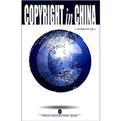中国知识产权
出版时间:2002-2 出版社:外文出版社 作者:曲三强 页数:353
Tag标签:无
内容概要
This book brings a general conception towards copyright in China with a thorough study. As well as providing the necessary context for under standing the law, the author worked systematically through the essential elements of copyright law. A particular attention has been given to the difficulties of conceptualizing liability for infringement of copyright and of relating that crucial, practical aspect of copyright law to the general principles of liability in Chinese law. With the urgency given to compliance by China's international obligations, it is doubtless that readers will find the book both interesting and valuable for an understanding of current Chinese copyright law and its development.
作者简介
Mr. Sanqiang Qu is now working at Law School of Beijing University of the PRC. He graduated and obtained his first degree from Beijing University in 1982. Six years later, he got his master degree of law from the same university. He went to Australia as a scholar in 1995, and obtained Ph,D. in 2000. For more than ten years of educational career in the field of law, his research involves many subjects such as jurisprudence, Iegal theory, criminal law and intellectual property law. His publications include many books such as Economic Criminology Law, Criminology and several dozens of thesis, essays and book reviews.
书籍目录
PrefaceIntroductionChapter One Historical Development of Copyright Law in China1. Introduction2. A Question of indigenous Copyright Protection in Feudal China2.1. Economic Reasons2.2. Traditional Culture2.3. Purpose and Conditions of Education2.4. Political Culture3. A Tortuous Road: Development of Copyright Protection in China3.1. Increasing Western Pressure3.2. Late Qing Efforts to Protect Copyrights3.3. The KMT Attempt to Create a Copyright System3.4. The Communist Approach to Law and Social Control3.5. The Development of Copyright Protection in the PRC3.6. Law Reform in the 1980s: a Part of the Global Struggle over Copyright Protection4. Concluding RemarksChapter Two The Rationale of Socialist Copyright1. Introduction2. The Notion of Copyright in Western Legal Literature3. General Notion of Copyright in Socialist Countries4. The Conception of Copyright in Socialist China4.1. The Situation Prior to the Economic Reform4.2. The Situation Since the Copyright Law 19905. The Nature and Characteristics of the Chinese Conception of Copyright5.1. Dualism of Copyright5.2. Moral Condemns and Economic Emphasis6. Concluding RemarksChapter Three Objects of Copyright and Their Lurutations1. Introduction2. Objects of Copyright: An Incomplete Notion in Chinese Law2.1. Concept of Copyright Work2.2. Qualification Requirement for Copyright Works3. More Limitations to Copyright: A Copyright Law with a Socialist Colour?3.1. Fair Dealing as a Legal Limitation to Copyrights3.2. Exhaustion of Copyright.4. Control over Copyrights for Political and Social Considerations4.1. Debates on the Legal Nature of Banned Works4.2. Copyrightability of the Work Created by a Person Deprived of Political Rights5. Concluding RemarksChapter Four Authorship and Copyright1. Introduction2. Authorship and Copyright in Chinese Law: A Mixed Conception2.1 The General Notion of Authorship in Western Jurisprudence2.2. Notion of Author ship and Copyright in Chinese Law3. Special Relationships Concerning Authorship and Copyright3.1. Employee/Employer Relation ship: An lntersection of Authorship and Copyright3.2. The Commission Relationship: Predetermination of Authorship and Copyright3.3. Co-authored Relationship: A Conceptual Extension of lndividual Creation4. Transferring Copyright5. Concluding RemarksChapter Five Mental State of the Infringer in Attribution of Liability1. Introduction2. Doctrine of Fault Liability as a Traditional Concept2.1. History of Development of the Doctrine of Fault Liability……Chapter Six Civil and Administrative Liabilities for Infringement of CopyrightChapter Seven Infringements of Copyright in Computer Software and Their LiabilityChapter Eight Criminal Liability for Copyright InfringementChapter Nine Facing Up WTO:China Is Changing Its Law with International StandardChapter Ten Conclusion and Future Prospects
章节摘录
An important issue raised by this case concerns whether or not "joint and several liability" should be imposed upon Lianbang. However, this question involves consideration of the original question of whether no-fault liability could be applied to cases of in fringement of copyright. In this case, the attitudes of the first instance court and the second instance court with regard to this issue are quite different,According to Article 130 of the GPCL, if an infringement occurred as a result of the acts of more than one person, joint liability would be imposed on all of the responsible parties. The regime of joint liability is an important supplement to the civil law which does not clearly provide whether or not aiding and abetting activities produce civil liability. In theory, the regime of "joint and several liability" is aimed at providing greater protection for the lawful interests of the infringed party. Under this regime, the infringed party may receive compensation from whichever of the in fringing parties has the greatest ability to pay the debt. That means the infringed party has a better chance of obtaining compensation. There is no doubt that the application of "joint and several liability" in this context extends the legal basis of copyright protection. On the other hand, 'joint and several liability" also extends the scope of liability for infringement of copyright. For this reason, some people argue that the purpose of "joint and several liability" in law is to provide more safety for the in fringed party, but that it should not thereby be used to punish the infringing party. The regime of "joint and several liability" must Operate under the requirement of maintaining "social justice and fairness". ……
图书封面
图书标签Tags
无
评论、评分、阅读与下载
用户评论 (总计0条)
推荐图书
- 文景(第2辑) (平装)
- 专升本入学考试英语大纲词汇标准教程
- 人类的创造
- 《史记·货殖列传》研究
- 中国军事思想论纲
- 转轨中的中东欧
- 卫俊秀学术论集
- 独立审计经营战略
- VOA特别英语.新闻.第1辑
- 新编大学英语学习指南(2) (平装)
- 伦理学与社会公正
- 恐怖主义与反恐怖斗争理论探索
- 世界主要国家和地区反恐怖政策与措施
- 各国及联合国反恐怖主义法规选编/反恐译丛
- 打造销售战将
- 现代韩国语会话(磁带)
- 网站整体策划与设计(网络媒体新论丛书)
- 五年制高等职业教育英语教材练习册
- 地中海魔咒
- 征服英语中考阅读理解180篇
- 王致福厨艺精品
- 21世纪上海城市安全思考
- 2002高等财经教育研究
- 方丈记 徒然草
- 中国教育统计年鉴1999
相关图书
- 最新大学英语六级考试宝典听力强化训练(磁带共5盘)
- 中国特色社会主义文库(第二辑)(上·下)
- 圣经人名词典
- 广东省高新技术产业“十五”发展规划研究
- 电算化会计基础教程
- 虎视中亚
- 大学英语四、六级写作指导
- 金融担保法律实务
- 西方中央银行会计及内部控制理论与实践
- 2002中华人民共和国海关统计商品目录
- 全国公共英语等级考试应试指南(第五级)(磁带1-3盒)
- 父母是最好的老师
- GRE考试指南
- 社会科学期刊编辑实用手册
- 中国奥运金牌得主大写真
- 乌啼三声
- 消费者权益保护法规汇编
- 我的生活,我的梦想
- 封锁战
- 现代战法丛书
- 诠释MBA
- “教育革命”的历史考察
- 中西乐论
- 历年全真试题诠释
- 新编大学英语课外精练阅读·语法篇
